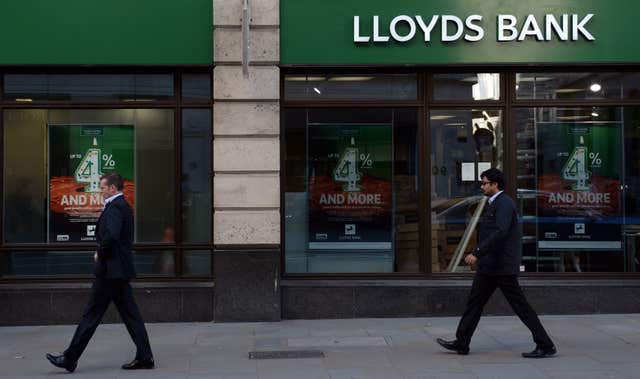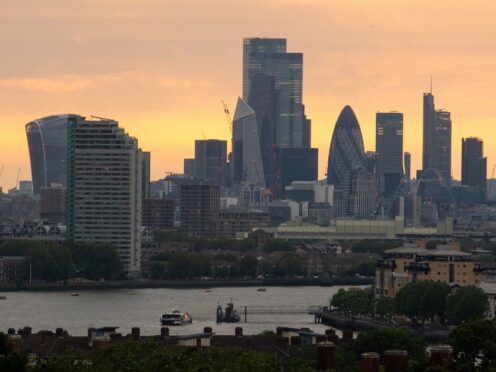The UK’s biggest high street banks are set to report lower profits over the start of the year, after a bumper 2023 which saw earnings peak as borrowing costs soared.
Lloyds, Barclays and NatWest will be updating shareholders on their first-quarter financial results on Wednesday, Thursday and Friday respectively.
The banking sector was buoyed last year by UK interest rates hitting their highest level for more than a decade, meaning lenders benefited from the cost of borrowing, particularly mortgages, surging.
Lloyds and HSBC were among the lenders to report record-high annual profits for 2023.
But earnings are set to have slowed as the high street giants feel the effects of a shift in customer behaviour, including more people locking away their cash into savings accounts with higher returns.
Lloyds is expected to report a profit of £1.7 billion for the first three months of the year, a drop from the £2.3 billion reported this time last year.

Investors will be closely watching the banks’ net interest margins, which show the difference between what they generate from loans and what they pay out for deposits.
They will also be keeping an eye on a possible rise in customers falling into arrears on their loan repayments in the latest period, or any other signs of consumers struggling.
For Lloyds, the net interest margin is expected to have edged lower since last year from 3.22% to 2.93%.
Matt Britzman, an equity analyst at Hargreaves Lansdown, said: “While the drop is expected and owes a great deal to being compared to the particularly strong environment this time last year, when rates were being hiked, anything lower than 2.90% would likely be punished.”
Lloyds will also be under the spotlight over its exposure to the car finance market through its subsidiary Black Horse.
The banking giant revealed earlier this year that it had set aside about £450 million to cover potential costs related to a major investigation by the Financial Conduct Authority (FCA) into whether people could be owed compensation for being charged too much for car loans.
Lloyds could give a further update on whether the expected costs associated with this review have changed, with Mr Britzman describing the issue as the “biggest question mark” currently hanging over the group.
Meanwhile, NatWest is set to report an operating pre-tax profit of £1.2 billion, down from the £1.8 billion quarterly profit it reported last year.
The banking group has a refreshed management team with Paul Thwaite at the helm as chief executive, and Rick Haythornthwaite recently stepping in as the new chairman.
It marks a new chapter after a turbulent year which saw the departure of former chief executive Dame Alison Rose, in the wake of the debanking saga sparked by former Ukip leader Nigel Farage.
“NatWest was one of the first to see a big shift from consumers into longer-term savings accounts, which was a surprise toward the end of last year,” Mr Britzman said.
“Trends here seem to have stabilised, but it’s certainly something to keep an eye on as those longer-term accounts are less profitable for banks.”

Barclays is set to report a pre-tax profit of £2.2 billion for the first quarter, down from £2.6 billion reported last year.
It provided some good news for shareholders in February when it said it was aiming to save about £1 billion by making the bank more efficient this year, and targeting about £2 billion worth of savings in total by 2026.
The cost-cutting plans are in tandem with an overhaul that will see it put less emphasis on its weighty investment banking arm.
Investors will be hoping for some good news from the division after a more turbulent year for financial markets and ongoing economic uncertainty, which has put pressure on global investment banks.
